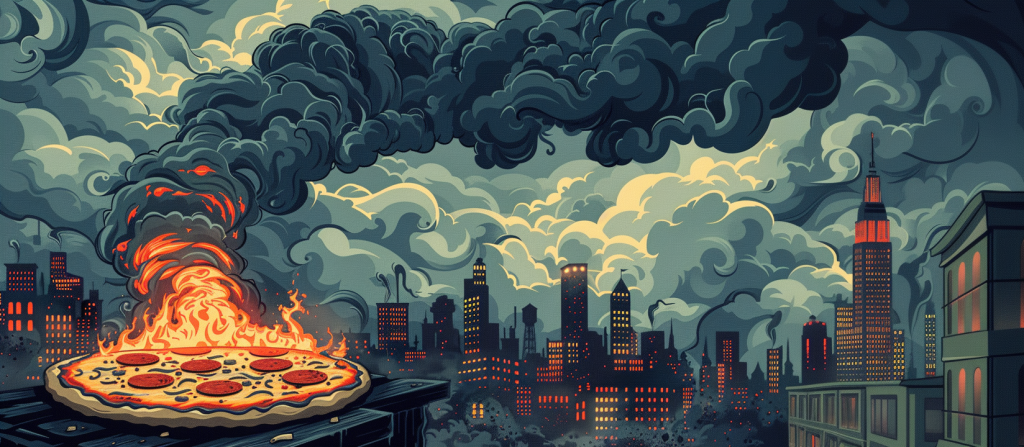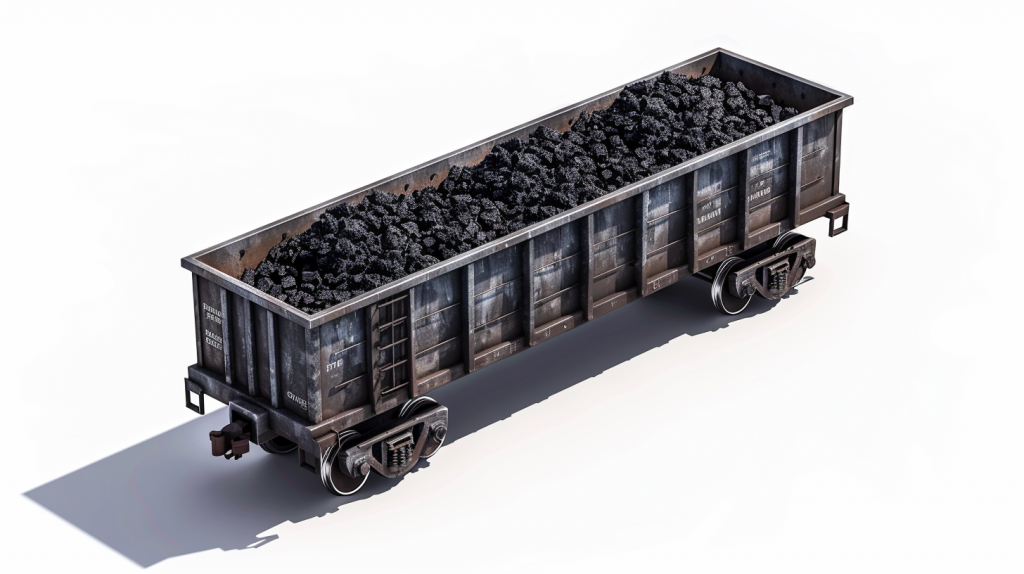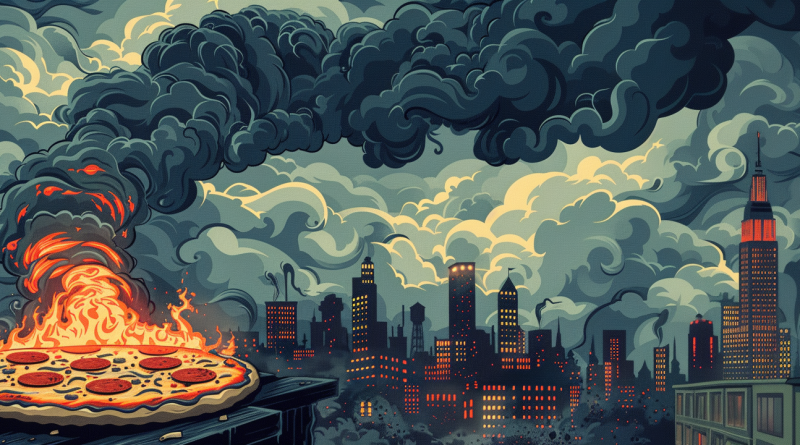Burgerbanism: Coal-Fired Pizza, The Latest Front in the Culture War?
A recovering conservative friend in South Florida sent me a news article about a bizarre angle of the culture war, involving, of all things, pizza. His presidential ambitions having been dispelled, Governor Ron DeSantis seems determined to dig in his stacked heels and fight the libs by defending Floridians’ god-given right to enjoy– wait for it- coal-fired pizza. I ask this– as someone who has marched for environmental justice, who has written climate policy, and who on most days increasingly believes it might be better for us to just revert to primitive hunter-gatherer cultures- can we leave the damn pizza alone?

The War on Pizza: Why Now?
Let’s start with why pizza ovens and why now.
A lot of global development discourse focuses on figuring out how to create cleaner ways to cook food. Cooking fuel accounts for an insane percentage of total particulate emissions. It also accounts for high rates of particulate emissions in places that really do not need more particulate emissions, whether we are talking about a rural village in BFE or a gas-fired stove in a poorly-ventilated apartment in Queens. As with anything else, a little bit of a bad thing can usually dissipate, but too much of a bad thing in one place is unequivocally bad.
It isn’t just cooking fuel. Chile, for example, has a high rate of reliance on wood-fired home heating, and this creates a lot of stinky smog in certain areas in colder months. Anyone who has ever sat in on a public utility meeting talking about capacity planning will understand why it’s extremely challenging from a cost perspective as well as an infrastructure one to switch fuels (to say nothing of the regulatory challenges).
In these United States, we definitely have the IAQ issue from cooking with gas (which is touted as a “clean” fuel source). But in restaurants, commercial kitchens have huge ventilation systems, so particulates are vented outside. Pizza is not typically coal-fired. It is not typically wood-fired. It typically is cooked in ovens that are usually either electric or gas-fired.
I’m not a betting man, even in the age of online sports betting from your phone, as advertised to me every five finger-swipes. But I’d guess that upwards of 95% of all commercial pizza ovens in this country are either gas or electric. I’d guess that most are gas because of the comparative efficiency of using fossil fuels to create a lot of heat quickly (as opposed to requiring a 200-amp electrical service for just your oven, or what have you.
Is it okay to just blow that dirty exhaust outside? Any answer is certainly highly subjective, but it’s worth considering how much exhaust we’re talking about.
New Yorkers, of course, take their pizza very seriously (although my uncle, now in his eighties, insists that he never had any awareness of foods like pizza or bagels as being uniquely New York things, growing up in Brooklyn Heights in the 40s and 50s). “It’s impossible to get a decent slice south of twenty-thoyd street,” my Minnesotan college roommate used to joke as the kind of thing New Yorkers might say. (Surprisingly not too far off). And, as part of this well-established pizza culture, coal-fired or wood-fired pizza is just another way of cooking.
How Dirty Is A Pizza?
Do these cooking methods create massive amounts of air pollution in a city that can’t, for the life of its goofball mayor, figure out ways to reduce reliance on single-occupant motor cars? Well, there’s not really evidence of this, but that’s certainly the argument being made by policymakers. One Fox article suggested that there were 130 noncompliant pizzerias in the city when the law was passed, and quoted one business owner as saying that it would cost $150,000 to install the new pollution controls. The pizza baron quoted said that the law was well-intentioned but ignored the high cost of implementation. This sounds very much like a New York or California Big Blue Democrat regulation– they’re on the right track, they have the right idea, but the implementation is completely without context.
I’d argue that the high cost of implementation doesn’t necessarily translate to broad health benefit. People have backyard firepits and they grill in backyards and parks. These things aren’t heavily regulated in most jurisdictions, yet they’re probably producing far more soot and other emissions at higher quantities. Are we going to take away people’s rights to grill?
I don’t think we should– because I believe in the centrality of food, its communal consumption and the diversity of its preparation- as a way to bring humans together, to solve problems, and to enrich our souls as well as our bodies. Yeah, I realize that pizza is more comfort food than “nutrition.” I firmly believe in the importance of eating good food. And I think that forcing small business owners to spend six-figure sums on some pollution control measure while trucks are idling on any corner in New York City to deliver imported garbage from Amazon, is a classic example of well-meaning but completely misguided liberal policy priorities.

Do The Policymakers Have A Point?
It’s true that coal as a combustion fuel is wildly inefficient and that its combustion produces more toxic grossness on a per-joule basis than other combustion methods. Fossil gas is the “cleanest,” although its extraction is shown to have beaucoup problems for giant methane leaks. Wood is better than coal, but usually best when it’s in pelletized form, which, as far as I’m aware, isn’t usually what wood-fired pizzerias are using.
But the actual polluting process involved with pizza production is operating at a scale that is infinitesimal compared to anything in the automotive universe, which basically defines the entirety of urban built environments (because we build cities for cars, not for people). If we compare pizza ovens to cars– certainly not a one-to-one given that even my New Jerseyite, pizza fanatic wife doesn’t even find herself eating pizza on a weekly basis- let’s think about those numbers. We might have a maximum of a few hundred pizzerias in the city of New York that have a non-gas, non-electric oven. Compare that to the 150,000 people who drive into Manhattan every day (for God knows what reason). Let’s guess that each of those commuters will burn about a gallon of gasoline every day. That’s a whole lot of particulates. How many is a whole lot? About 250 milligrams of PM2.5 per gallon of gasoline burned, as far as I can tell.
Burning gas to cook a whole lot of pizza is, of course, also dirty. It’s also completely unregulated.
It is, of course, nearly impossible to create an equivalency between “estimated milligrams of PM2.5 emitted per passenger miles traveled” and “milligrams of PM2.5 emitted per pizza slice et [sic].” But I wanted to at least throw it out there to point out how silly it is for policymakers to focus on something that is almost certainly not anywhere near one of the top five or ten causes of respiratory illnesses (or other illnesses that can result from environmental contamination)– that imposes an undue burden on small business owners, and that infringes upon Americans’ right to eat more varieties of good pizza.
One thing is for sure: Ron DeSantis’ attempt to drag one of the favorite foods of the country into the culture war is not going to incentivize me to book my next trip to Florida.



